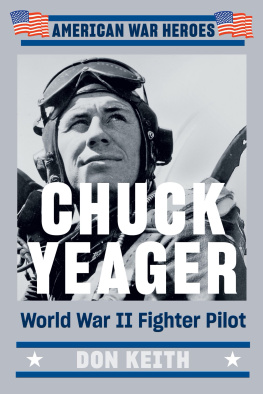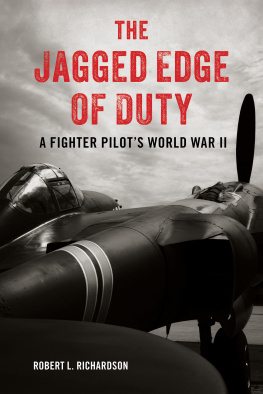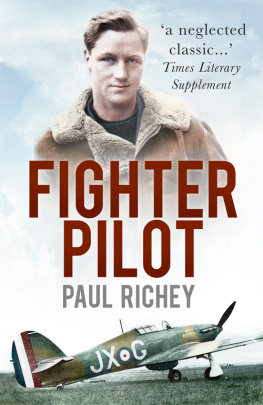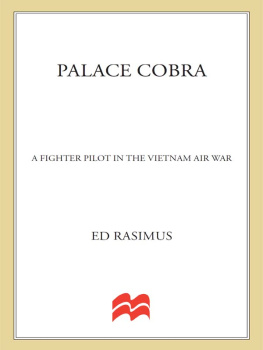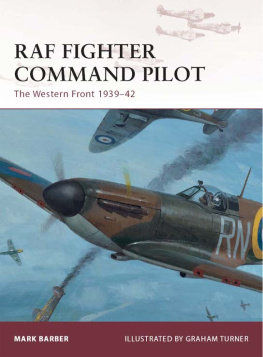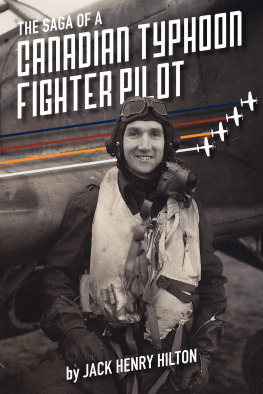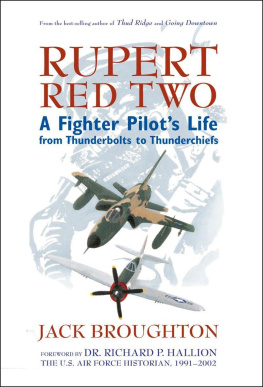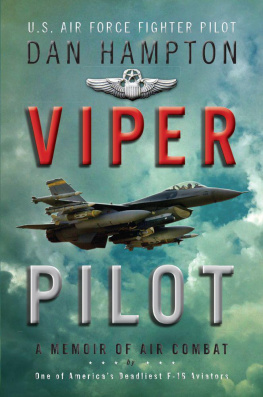Fighter Pilot
Fighter Pilot
The First American Ace
of World War II
WILLIAM R. DUNN
Foreword by Edward M. Coffman
, The Ace, and the appendix, The War Birds, was originally published in different form in Air Force Magazine, April and September 1975, September 1976, and July 1977.
Copyright The Air Force Association (1975, 1976, 1977); used by permission.
Copyright 1982 by The University Press of Kentucky
Foreword copyright 1996 by The University Press of Kentucky
Scholarly publisher for the Commonwealth,
serving Bellarmine College, Berea College, Centre
College of Kentucky, Eastern Kentucky University,
The Filson Club, Georgetown College, Kentucky
Historical Society, Kentucky State University,
Morehead State University, Murray State University,
Northern Kentucky University, Transylvania University,
University of Kentucky, University of Louisville,
and Western Kentucky University.
Editorial and Sales Offices: The University Press of Kentucky
663 South Limestone Street, Lexington, Kentucky 40508-4008
Library of Congress Cataloging-in-Publication Data
Dunn, William R., 1916-
Fighter pilot.
Includes index.
1. World War, 1939-1945Aerial operations, American. 2. Dunn, William R., 1916-. World War, 1939-1945Personal narratives, American. 4. United States. Army Air ForcesBiography. 5. Fighter pilotsUnited StatesBiography. I. Title.
D790.D86940.54497382-40172
ISBN 0-8131-1465-9AACR2
ISBN 0-8131-0867-5 (pbk.: acid-free paper)
This book is printed on acid-free recycled paper meeting the requirements of the American National Standard for Permanence of Paper for Printed Library Materials.

Manufactured in the United States of America
For all fighter pilots, past, present and future
ours and theirs.
Heres to the fighter pilot, wherever he may be,
Aloft in lonely glory,
At rest in eternity,
Or here, reliving thrills again
Rolling back the years, from now till then.
Heres to the breed apart, to a dying art,
To the spirit that now binds us;
To the planes and the flak, to the brass and the crap,
And to battles long behind us.
To the fighter pilot, then, be he friend or foe,
Let us drink, Gentlemen, and let us shout,
Tally Ho!
Contents
by Edward M. Coffman
Foreword
Most of us enjoy adventure vicariously. Television, movies, and books provide all we want of such experience. It is different for a few, as Ralph Waldo Emerson pointed out in his essay Heroism: But whoso is heroic will always find crises to try his edge. Bill Dunn was such a man, and the time in which he lived was certainly filled with crises. His memoir is an extraordinary adventure story spanning the turbulent years from the mid-1930s to the early 1970s.
As a teenager in the early days of the Great Depression, he not only hunted wild horses on the Northern Plains with his Indian friends but also learned to fly an airplane. After an enlistment as an infantryman in the Regular Army, he decided to pursue a career in commercial art while getting in as much flying time as possible. Within a week after the beginning of World War II, Bill enlisted in the Seaforth Highlanders in Canada. He knew how to be a soldier and soon became a sergeant; besides, he loved the skirling of the bagpipes and the tradition and grew accustomed to the kilt. Although he shot down two German planes from a ground positionno mean achievementhe yearned to meet them in the sky.
His opportunity came when the British began to look to American volunteers to replace fighter pilots lost in the Battle of Britain. As one would expect, Bill was among the initial volunteers for #71, the original Eagle Squadron. Eventually, 244 Americans served in three Eagle Squadrons and, in the course of the war, 42 percent of those men died. It was a dangerous business, yet for those who followed the war in the comfort of their homes in the United States, there was a good deal of romance and even glamour attached to the men of the Eagle Squadrons, just as there had been to the Americans who flew with the French in the Escadrille Lafayette during World War I.
Bill discovered the exhilaration of flying the best fighter planes of the daythe Hurricane and the Spitfireand mastered the deadly game of air-to-air combat. He was the first Eagle pilot to shoot down an enemy aircraft, and in August 1941 he became the first to shoot down five planes. Although badly wounded in that fight, he was able to land his plane, but his Eagle Squadron days were over. It would be twenty-five years before the Royal Air Force confirmed his claim to being the first American ace of World War II.
After a stint training pilots in Canada, Bill transferred into the American Army Air Corps as a captain in 1943. He joined the 406th Fighter Group and took part in the softening up and interdiction missions that helped prepare the way for the invasion of Normandy. He flew cover on D-Day and took part in the tactical air support of Pattons sweep through France. There were also escort missions as well as the always chancy business of low-level attacks on enemy vehicles and troops. He even sank a 4,000-ton troopship at Brest. By October he had completed the requisite missions and, together with those amassed in the RAF, had a total of 519 combat flying hours. It was time to go home, but just for a brief stay. Within a few months, he was flying over the Hump to serve in the Fourteenth Air Force in China. After the surrender of the Japanese, he stayed on as an advisor to the Chinese Nationalist Air Force during the ensuing civil war. His war thus did not end until he came home a lieutenant colonel in January 1947.
Twenty years later, he again went into action, this time as a warrant officer in Vietnam. He had stayed in the Air Force and had interesting assignments in Iran and Brazil, but he had lost his rank and had to start over as a sergeant. At Tan Son Nhut airfield, he was theoretically a planning officer, but he wrangled his way into missions on assorted aircraft. During an attack on his quarters in the Tet Offensive, he led in the defense as he put his infantry training to good use. Bill completed his career in the Air Defense Command at Colorado Springs, where he retired as a reserve lieutenant colonel in 1973.
Bill Dunn was a fighting man, but he was also a writer. In this book, he vividly recreates the fighter pilots worldthe camaraderie and rough-housing on the ground and the kill-or-be-killed tension in the air. Airplanes were his profession for more than thirty years, and his love of them shows in the appendix, in which he describes the traits of the legendary World War II fighters that he flew. Few, if any, World War II pilots had as varied and broad experience as Bill Dunn, and none left a better written memoir.
It was my privilege to know Bill. I met him in May 1981 when I interviewed him about his experiences in the Regular Army. Since I knew of his service in the Eagle Squadron, I could not resist asking him for his opinion. His response was characteristic: Great! It was a lot of fun. I wouldnt have missed it for anything. I sure would have hated to have been a civilian.
During the academic year 1982-83, when I was a visiting professor at the Air Force Academy, I saw much of Bill and his gracious wife, Evelyn. Theirs was a most hospitable home. Bills blunt, crusty manner concealed a warm, generous man. He was also one of the most multitalented men I have ever known. When he was not writing (he published two books on the Indian Wars as well as this memoir), he was painting striking and accurate pictures of aerial combat. He also constructed and flew radio controlled models.


